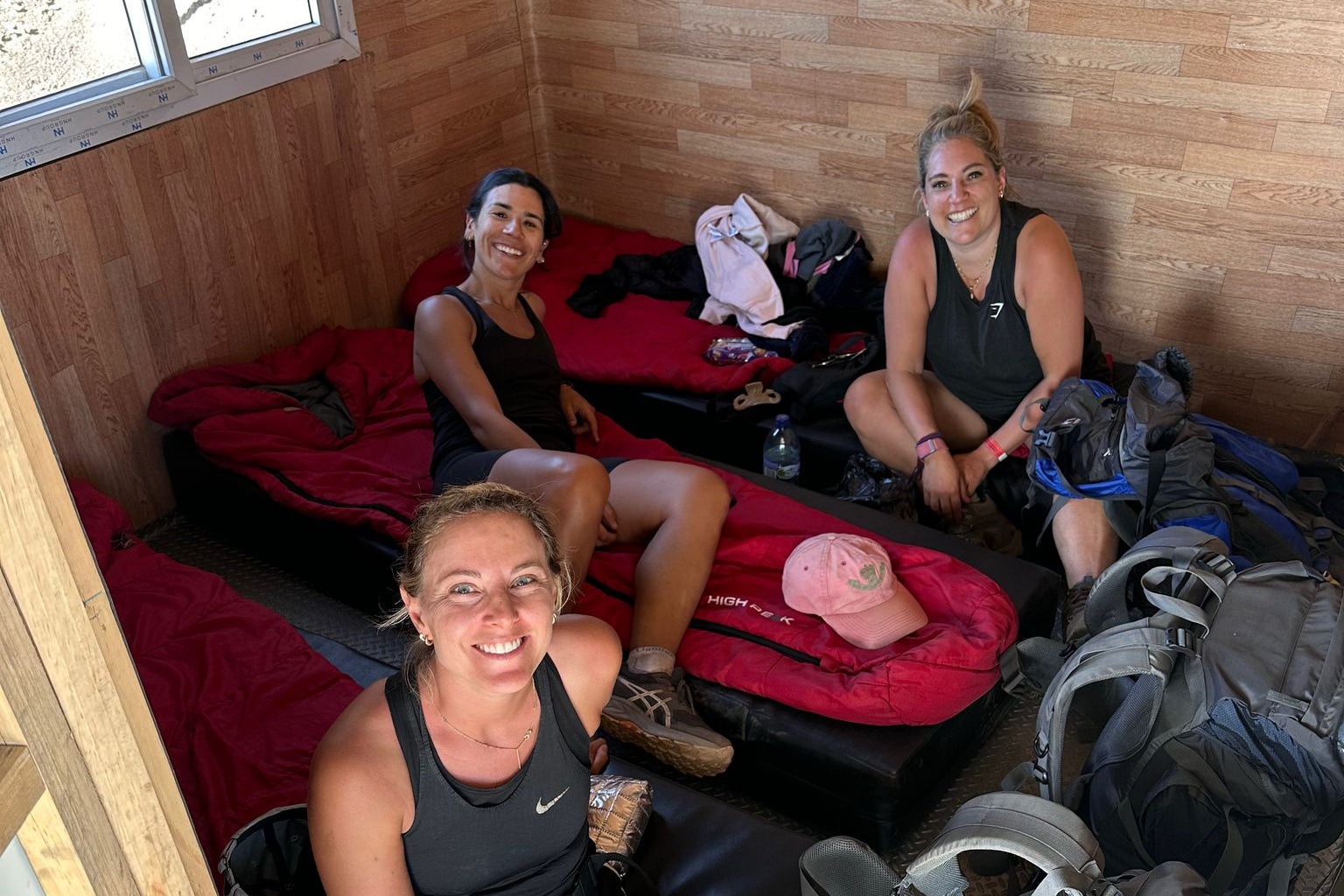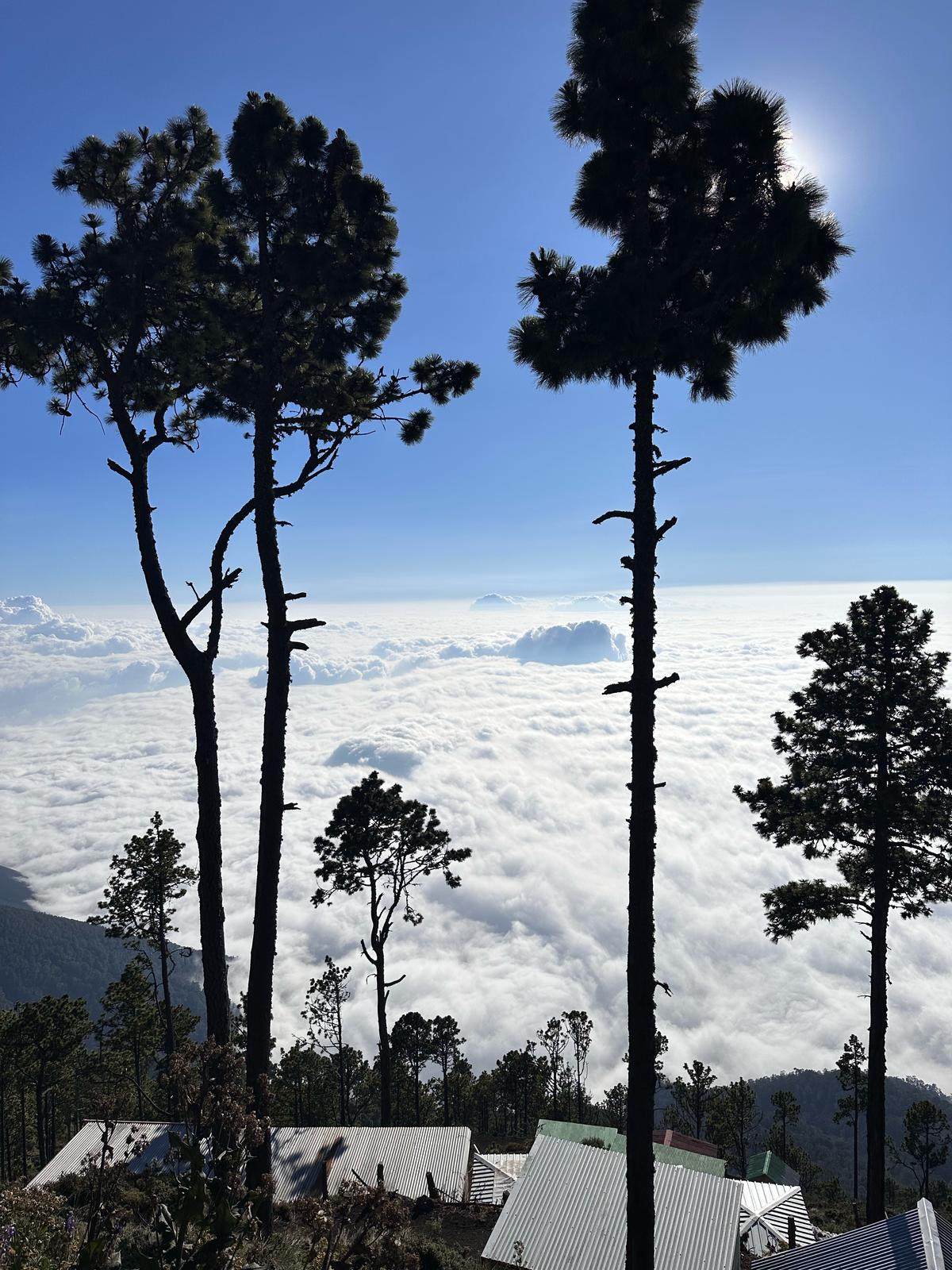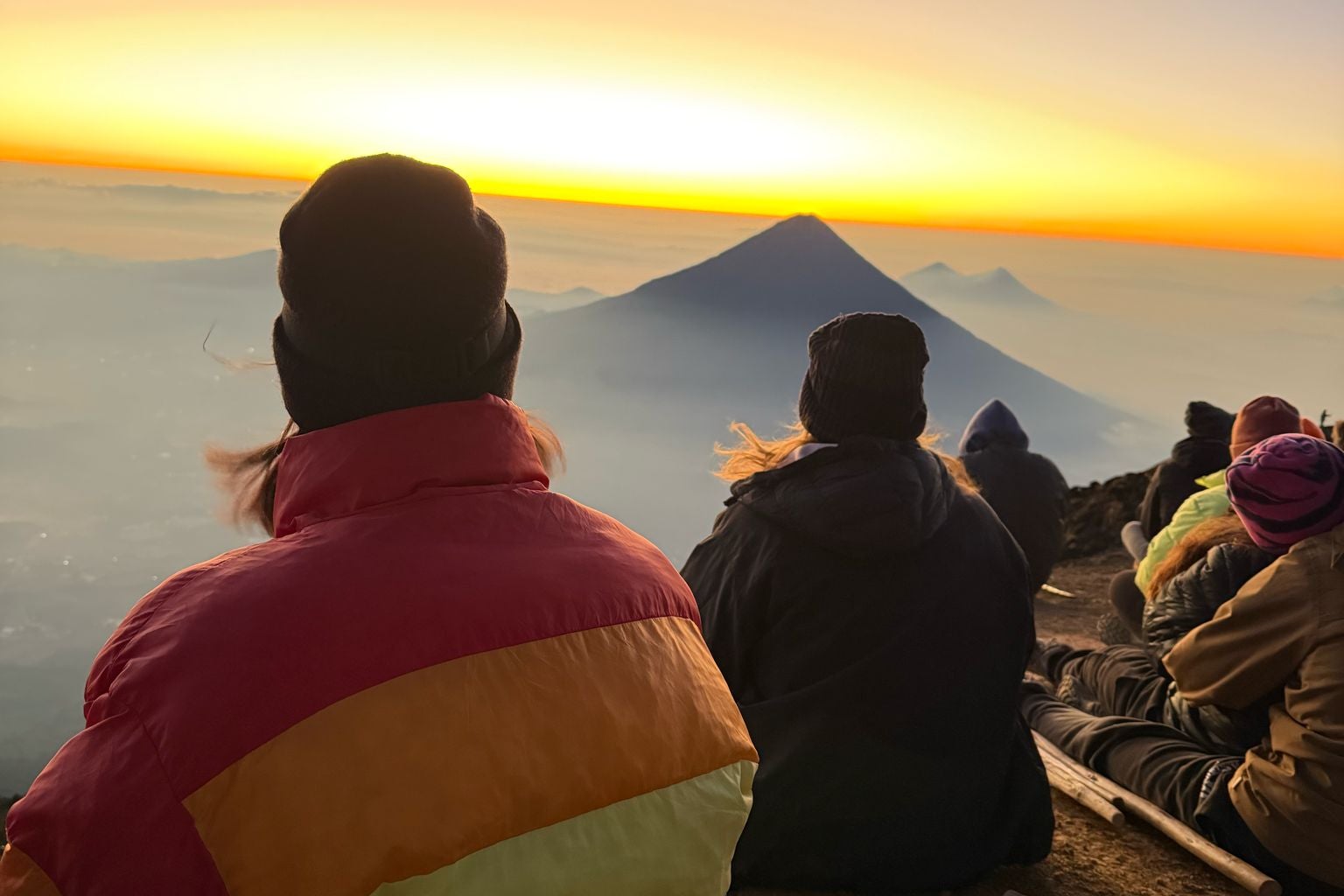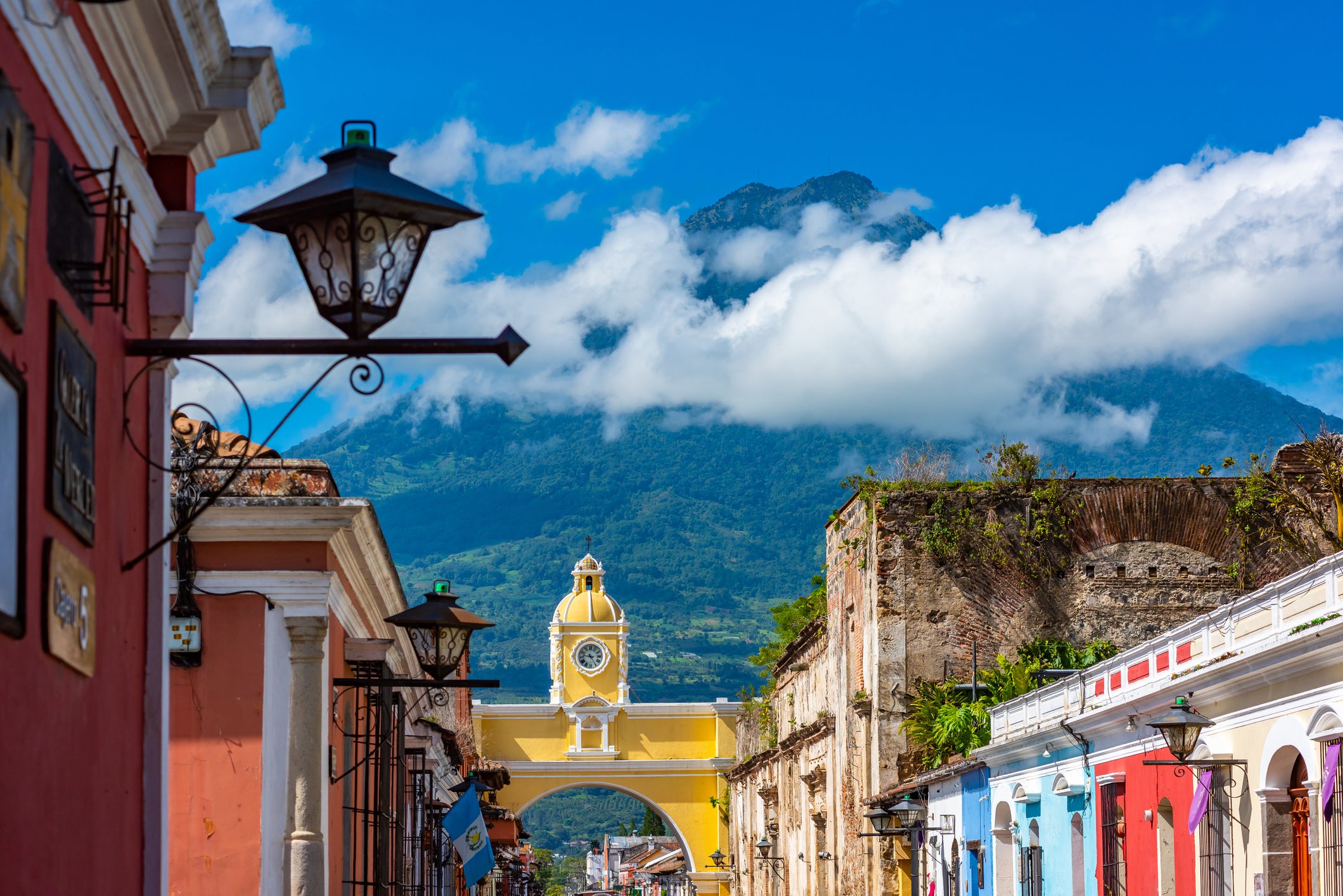
Three days before I’m due to summit Guatemala’s Acatenango volcano, a text pings on my phone. It’s from my tour guide: “Tours are currently cancelled, will update with more information as soon as possible.”
Earlier that day, neighbouring volcano Fuego – one of the most active in Central America – had erupted, violently spewing lava, ash and rock, prompting Guatemala authorities to evacuate more than a thousand people from nearby communities.
This explained the grey fog that had descended across Antigua, the colonial-era city I was staying in, just 16km (10 miles) from Fuego’s slopes. The clear blue skies that once painted a perfect backdrop to the city’s stunning Spanish Baroque architecture had now turned a heavy charcoal.

Before the eruption, my plan had been to hike the 3,976m up Acatenango – an active but “quiet” volcano that hasn’t erupted in more than half a century. I’d been warned the trek would be tough: the first day involved 4-5 hours of steady, steep climbing to reach base camp. The next morning, we were to wake well before sunrise and trek another hour or two to the summit, where panoramic views of the still-smoking Fuego typically steal the show.
Now, that seemed increasingly unlikely. But if nothing else, the sudden cancellation was a stark reminder of how unpredictable volcano trekking really is. While I had opted for Acatenango, many hikers venture closer to Fuego’s infamous “knife-ridge”, a narrow trail flanked by 500m drops on either side. The eruption had cast a spotlight on the risks that come with such exhilarating adventures.

In recent years, volcano tourism has surged in popularity. Adventurous travellers are flocking to hotspots like Iceland, Italy, and Guatemala for a front-row seat to the raw drama of nature. Fuego, in fact, has erupted multiple times in the past few years, including as recently as March and June 2025. Similarly, Italy’s Mount Etna, Europe’s most active volcano, has been spewing lava and ash on and off throughout the year.
Perhaps most dramatically, Iceland’s Fagradalsfjall volcano roared back to life in March 2021 after lying dormant for over 800 years. In the six months that followed, more than 356,000 visitors came to see the eruption, according to the Icelandic Tourism Board.
The pull is undeniable. There’s something deeply primal about watching the earth crack open and fire spill forth – an experience that combines awe with a subtle undercurrent of danger. But volcano tourism also carries very real risks. This June, a 26-year-old Brazilian tourist was found dead after falling while hiking near the crater of an active volcano in Indonesia. Efforts to reach her were hampered by the extreme terrain and weather conditions.
Read more: What it’s like hiking Iceland’s famous Eyjafjallajokull volcano

On 3 June 2018, Fuego erupted catastrophically. Fast-moving currents of hot gas and volcanic matter raced down the mountainside, devastating nearby villages. The official death toll stood at nearly 200 people, but with hundreds more reported missing, many locals believe the true figure is significantly higher.
The tragedy prompted an overhaul in safety protocols, says Ox Expeditions, which runs several hiking tours to both Acatenango and Fuego.
“The most tragic thing about the eruption is that with proper warning systems and education many of the deaths could have been avoided,” the organisation says. “Since the eruption, lots of volcano monitoring equipment has been donated and many more studies are being conducted. These are looking at how to improve warning systems and educate the local people living in high-risk areas so as to reduce loss of life in future eruptions.”

Despite the risks, for many visitors the chance to climb an active volcano is too compelling to pass up. Chloe Steuer, a backpacker from the UK travelling across Guatemala, describes her hike up Acatenango as one of the highlights of her trip.
“Everyone in town was talking about it,” she tells me. “I was excited to get into nature and see something as incredible as an active volcano.”
Chloe had debated whether to join the hike at all, having heard that Fuego had been quiet for weeks. Another traveller I speak to has cancelled their trip entirely for that reason. But Chloe went ahead and was glad she did.
“It was a tough, challenging climb to base camp,” she says. “After we reached it, we had dinner and went to bed in our little huts. Everyone was knackered.”
What happened next, however, made it all worthwhile. “At 3am, we were woken up by what sounded like a bomb. The tin shelters we were sleeping in were shaking. People outside were shouting ‘lava!’ Me and my friends jumped out of bed. We didn’t even put shoes on. We ran outside to see this incredible, fiery eruption happening right in front of us. It was unbelievable.”
Read more: The five-day trek in the Guatemalan jungle that’s worth every blister

While it was dramatic, Chloe never felt unsafe: “The guides were great, and it felt really well organised. I found out later that the group after ours had to be evacuated from base camp because the smoke got too intense, so they clearly have safety procedures in place.”
For sure, volcano tourism is an exercise in controlled risk. Operators walk a tightrope between delivering unforgettable experiences and ensuring visitor safety – particularly in countries like Guatemala, where so many tourists specifically head to the destination to seek out these natural wonders.
For better or worse, the very thing that makes it dangerous is also what makes it unforgettable. Though as my own trip reminds me, sometimes nature gets the final word.
How to do it
There are several tour operators running volcano trips. Robyn was in touch with Ox Expedition Tours, while Chloe went with Soy Tours Antigua.
Getting there
You can fly from London to Guatemala City with several airlines, including United, Lufthansa and American Airlines, usually with a connecting flight in the United States. Total flight time is around 16 hours. It's then about an hour drive to Antigua, which can be travelled by bus, shuttle or taxi.
Where to stay
Robyn was a guest of Pensativo House Hotel in Antigua, which has doubles from around £140 per night, including breakfast. Views of Fuego can be enjoyed from the rooftop restaurant where breakfast is served. There are also plenty of additional hotels and hostels to choose from for all budgets.
Read more: How to unlock Iceland’s magical volcanic landscape







